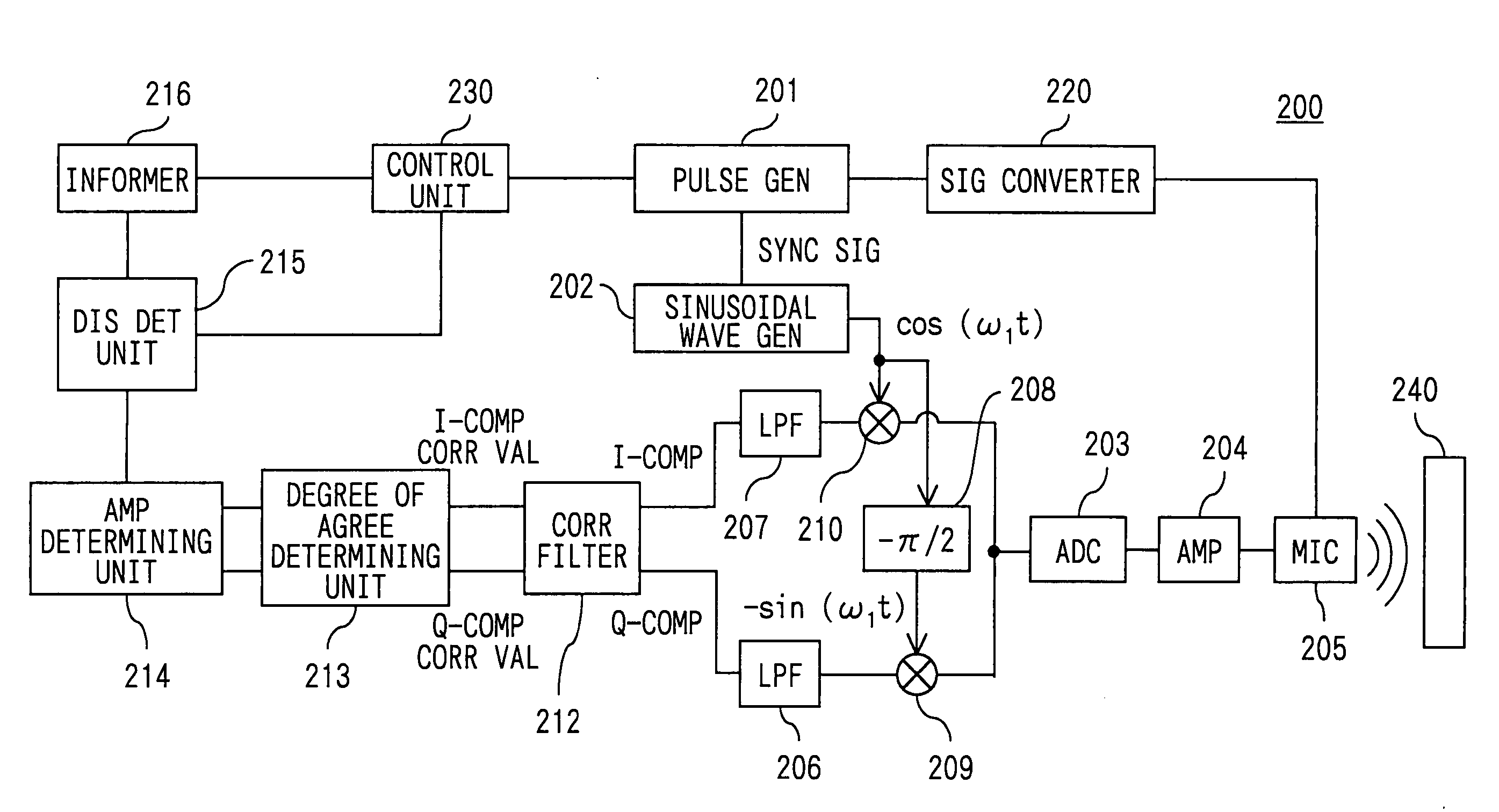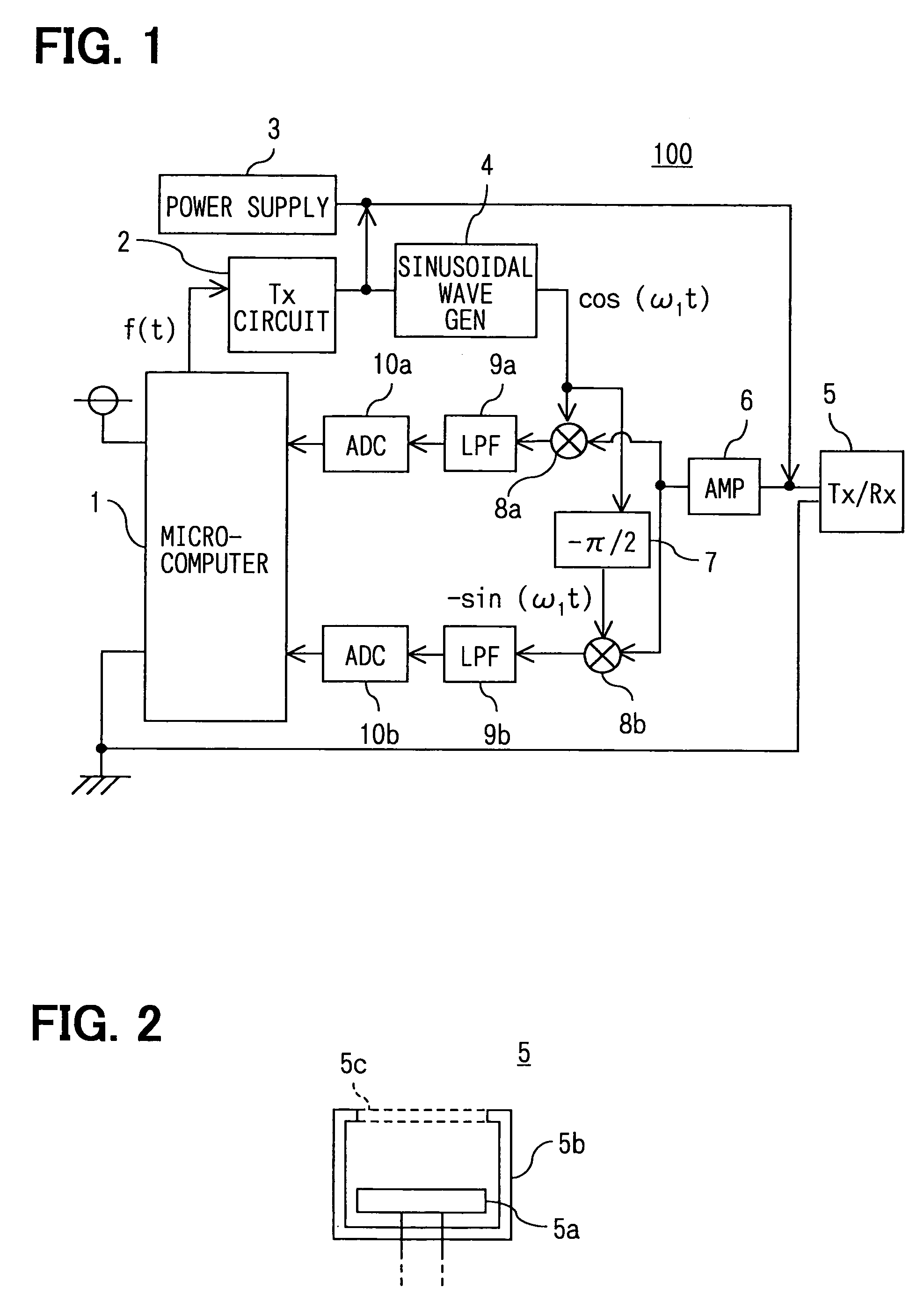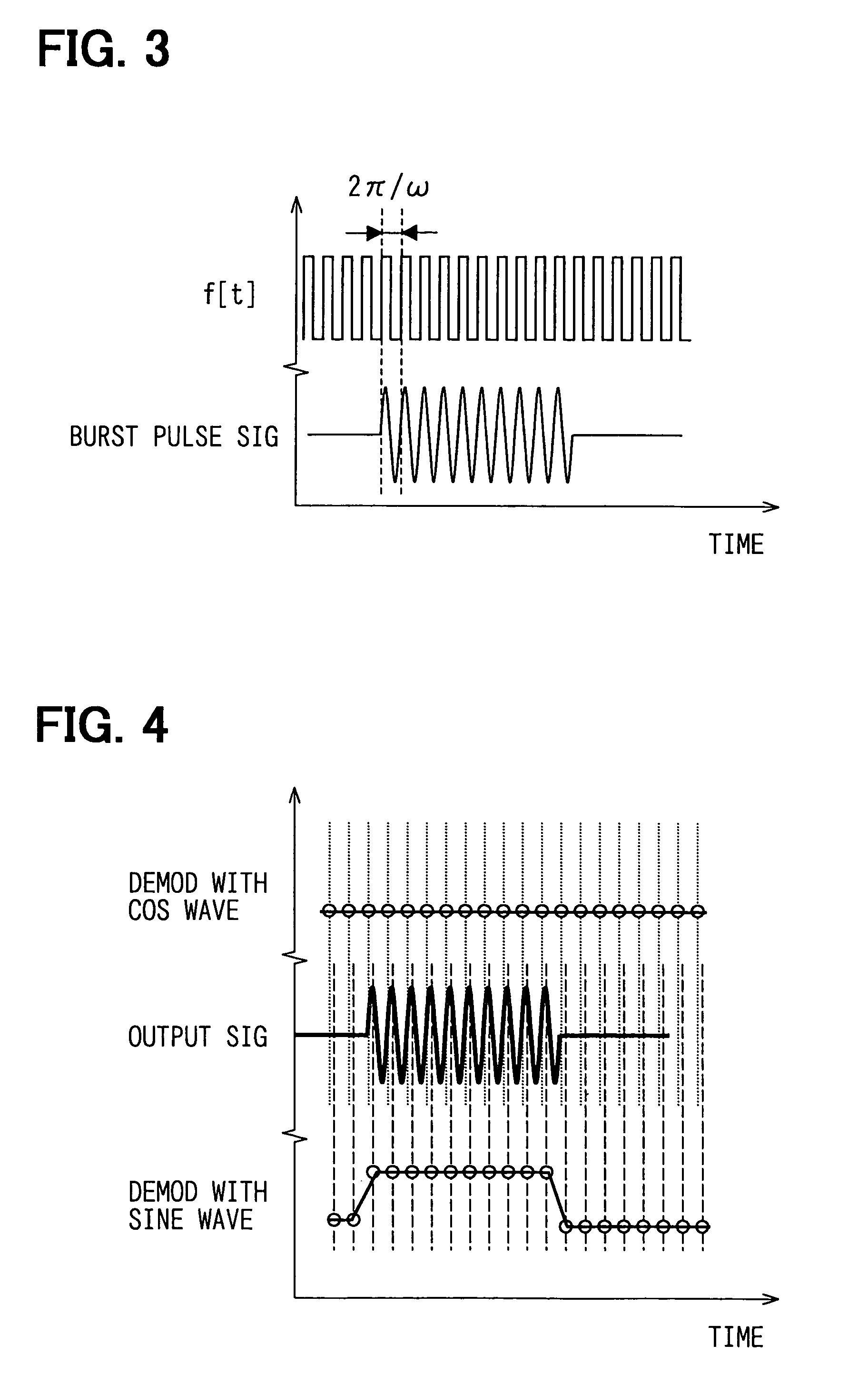Apparatus for detecting a distance and apparatus for detecting a body
a technology of detecting distance and apparatus, applied in the direction of pulse technique, amplitude demodulation, instruments, etc., can solve the problem of inability to favorably compress pulse widths of received signals reflected by bodies that are uniformly moving, and difficulty in removing noise components in frequency components that pass through the band-pass filter, etc. problem, to achieve the effect of improving the sn (signal to noise) ratio of received signals
- Summary
- Abstract
- Description
- Claims
- Application Information
AI Technical Summary
Benefits of technology
Problems solved by technology
Method used
Image
Examples
first embodiment
[0175]FIG. 1 is a diagram illustrating the constitution of an apparatus for detecting a distance according to this embodiment. As shown, an apparatus 100 for detecting a distance of the embodiment is constituted by a microcomputer 1, a transmitter circuit 2 (shown as Tx CIR), a power supply device 3, a sinusoidal wave generator 4, a transmitter / receiver microphone 5 (Tx / Rx MIC), an amplifier 6 (AMP), a phase shifter 7, multipliers 8a and 8b, LPFs (low-pass filters) 9a and 9b, and analog / digital converters 10a and 10b (ADCs).
[0176]The microcomputer 1 may be a conventional microcomputer constituted by a ROM, a RAM, a CPU, an I / O and a bus for connecting them (not shown for ease of illustration). Referring to FIG. 3, the microcomputer 1 forms pulse signals f[t] having an angular frequency (ω) and sends them to the transmitter circuit 2. The microcomputer 1, further, receives output signals from the ADCs 10a and 10b, and executes a predetermined signal processing for the output signals ...
modified example 1
[0199]In the embodiment, the orthogonal demodulation is effected by using sine wave signals of an angular frequency in synchronism with the angular frequency (ω) of the burst pulse signals. Here, however, the angular frequency of the sine wave signals used for the orthogonal demodulation may be selected to be equal to the resonance angular frequency of the transmitter / receiver microphone 5.
[0200]Namely, in general, the pulse signals f[t] for driving the transmitter / receiver microphone 5 are set in advance to be in agreement with the resonance frequency of the piezoelectric element 5a, so that the piezoelectric element 5a efficiently receives the reflected waves. By orthogonally demodulating the reflected wave signals by using the sine wave signals of a frequency nearly equal to the resonance frequency of the piezoelectric element 5a, therefore, the action and effect same as those of this embodiment can be expected.
modified example 2
[0201]When, for example, a body reflecting the transmission waves is in motion, a frequency component of an angular frequency (ω2) is added to the reflected waves received by the transmitter / receiver microphone 5 because of the Doppler effect. The reflected waves affected by the Doppler effect are orthogonally demodulated, and the demodulated signals are passed through the LPF to be added with a term ejω2t relative to the above formula 27 and to be added with a rotational vector ejω2 on the IQ plane as expressed by the following formula (28),
LPF output=A×f[t]×ejθ×ejω2t (28)
[0202]When the reflecting body is in uniform motion, however, the angular frequency (ω2) assumes a constant value, and the above formula (28) can be rewritten as the following formula (29),
LPF output=A×f[t]×ejθ×ejω2t=A×f[t]×ejθ×ejθ(t) (29)
[0203]Here, a difference between the output signal produced last time by the LPF and the output produced this time can be expressed by the following formula (30),
Difference det...
PUM
 Login to View More
Login to View More Abstract
Description
Claims
Application Information
 Login to View More
Login to View More - R&D
- Intellectual Property
- Life Sciences
- Materials
- Tech Scout
- Unparalleled Data Quality
- Higher Quality Content
- 60% Fewer Hallucinations
Browse by: Latest US Patents, China's latest patents, Technical Efficacy Thesaurus, Application Domain, Technology Topic, Popular Technical Reports.
© 2025 PatSnap. All rights reserved.Legal|Privacy policy|Modern Slavery Act Transparency Statement|Sitemap|About US| Contact US: help@patsnap.com



